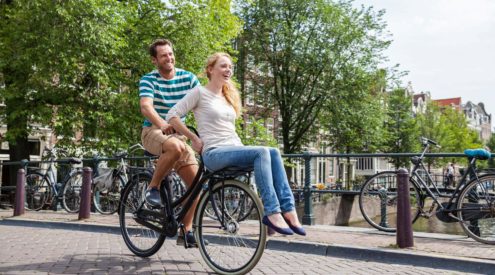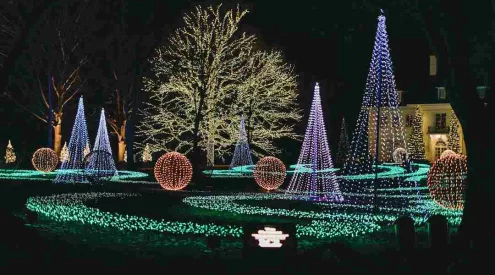Anita Froneman learns to breathe underwater while snorkelling with a master
Somewhere east of the Seychelles and a little to the north, there exists a scattering of blips that barely register on a map. Look carefully, though, and apply your imagination and you might get the impression of God standing on Sri Lanka with a handful of islands in his hands. In a moment of creative genius, he might have tossed them over his shoulder.
The Maldives consists of a string of 26 coral atolls comprising some 1 192 tiny islands that formed from sunken volcanoes over millions of years. Of these, a mere smattering – roughly 180 – are populated. The majority of people are crammed into one city – Malé – where life couldn’t be more different from the one pictured in the brochures.
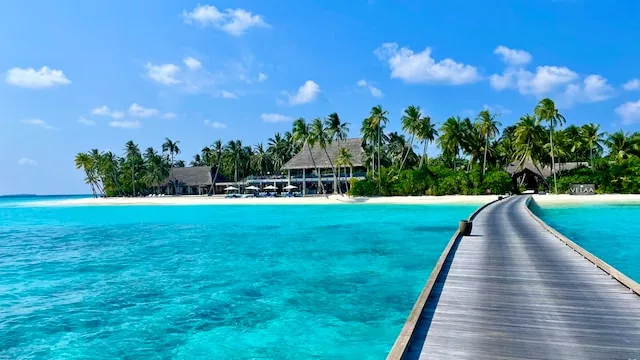
In 2020, just prior to the onset of the pandemic, there were some 166 resorts each situated on its own island; at that time, about a dozen new ones were opening each year, and the country was associated with celebrity weddings, billionaire getaways and some of the most decadent vacationing known to humanity. A far cry from the nation’s start in tourism in 1972, when its first resort – Kurumba – opened in North Malé atoll.
Images that spring to mind include cocktails, hammocks swaying between palm trees and toes cooling in cyan waters, legs dangling from a wooden deck. But there’s more to this archipelagic country than the blissful idolatry of sun and sea.
The Maldives is known for its sea turtles, including the endangered green turtle and critically endangered hawksbill turtle, as well as an impressive population of manta rays.
So, yes, snorkelling was on the itinerary. Floating metres away from these animals is a rare and exhilarating experience. A woman in our snorkelling group was so overcome with wonder, so awed by one hawksbill turtle’s nonchalance (it barely acknowledged us as we gawked through our goggles), she reached out to try to touch it. Gently, our guide intervened: no touching.
Freediver Mohamed Azmeel is the senior excursion guide at Hideaway Beach Resort. On land, he is quiet with a shy smile, filled to the brim with interesting marine facts once you get him talking. The Maldives, he told me, account for the largest reef manta ray population in the world. Conservationists estimate the number of mantas in the country’s waters is upwards of 5 000. One of the reasons for this is that few animals prey on mantas, thanks to their size. Known predators are bull sharks and tiger sharks.
In the water, Mohamed glides about with ease and grace. While I was bobbing about and spluttering, swallowing gallons of salty water, all the while getting sunburnt, he was moving through the water like a seal, born for the cool, big blue.
There’s more to see than mantas and turtles, though. Take whale sharks. These wide-mouthed fish, which can grow up to 12m long, are surely an impressive sight as they all but vacuum the reefs, gulping small fish and plankton by the bucketload. Nine out of 10 snorkelling brochures promise a sighting, but you’ll have even better odds on a scuba mission. The diving here is first-class and there are some 25 resorts with Padi dive centres, and most offer packages for divers who want to spend most days exploring the deep. And if resort living isn’t your style, there are a sizable number of live-aboard boats offering a wide variety of dives.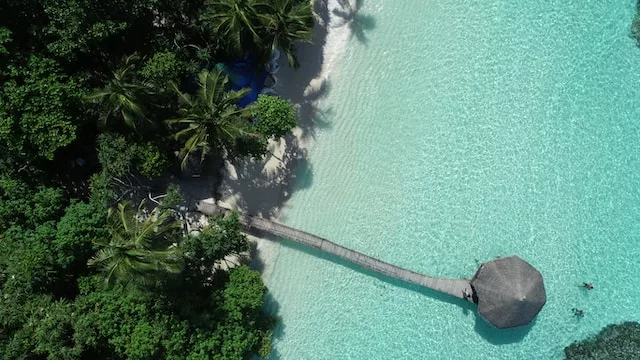
Perishing paradise?
Spending my days trying to mimic Mohamed’s effortless movements and breathing techniques, I noticed something else that brought me down to Earth: many of the corals on the reefs were dead. Coral bleaching is nothing new in the Maldives, reducing the vibrant, neon-coloured organisms to a faded white. It is a rather alarming sight. A massive 60% of hard corals in the Maldives bleached and died in 2016 because of rising ocean temperatures. This was after these same reefs had managed to recover from an earlier bleaching event in 1998, in which more than 90% of hard corals died.
Apart from being Asia’s smallest country, the Maldives is the flattest country on Earth, and with an average altitude of only two metres, experts say the island nation could be entirely under water in less than a decade.
Like many island nations, the Maldives is at high risk from climate change, even though its carbon emissions average an annual 3.63 tonnes per capita (South Africa averages 7.41 tonnes per capita and it has a land surface of 1.2 million square kilometres compared to the Maldives’ 297.8km²). To highlight this challenge, the government held an underwater cabinet meeting wearing scuba gear in 2009. More recently, the government has been negotiating with wealthy nations to sell or lease islands in return for funds to build massive sea walls to help preserve this tiny paradise from disappearing.
After a day spent in the water, curled up in a big basket hanging from a tree, I reflected on Mohamed’s meditative underwater calm, while sinking into the cliche and sipping on a mojito. These islands swallow you up into a sunny cocoon and it’s easy to forget about the things that concern mere mortals – things like deadlines, bills and climate change.
The freediver
For Mohamed Azmeel, a local and senior excursion guide at Hideaway Beach Resort, diving isn’t all fun and games. He grew up spending hours in the water, swimming and snorkelling with his friends.
Mohamed has been freediving for 19 years. He reaches a depth of 22m with ease, and can hold his breath for up to three minutes.
‘Snorkelling with my friends growing up, we used to freedive, challenging each other, seeing who can go deeper than the others. I realised that the deeper we go, the more we find new creatures.’
Today, he says, he dives in search of tranquillity. ‘Freediving allows me to move through the underwater world in complete silence, and I gain a closer and more intimate connection with the ocean. With all sounds drowned out, including the beat of my own heart, I experience a profound silence unlike anything anywhere else on Earth.’
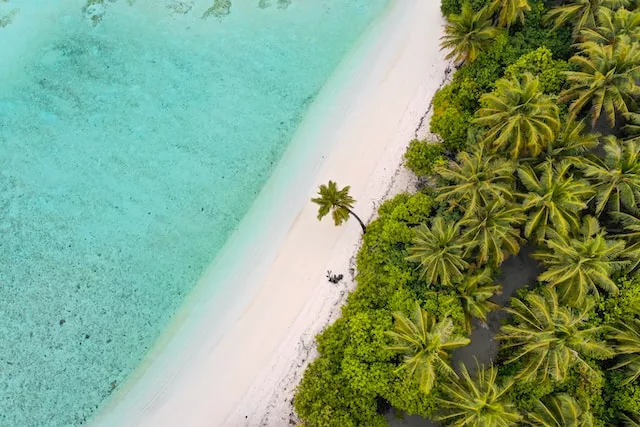
Coral bleaching
Corals have a symbiotic relationship with algae (zooxanthellae) living in them, which provides them with most of their nutrients. If corals experience changes in conditions – including water temperature, light and pollution – they can become stressed, losing this algae. Without it, the corals struggle to meet their energy requirements. Corals can survive bleaching, but it leads to malnutrition, which makes them vulnerable and, in the case of prolonged exposure, can lead to death.
The tourism lifeline
In the early 1980s, the Maldives was among the 20 poorest nations in the world. Tourism has dramatically changed that, with tremendous improvements in living standards and a drop in unemployment and in the number of people living below the poverty line.
The unique concept of “one island, one resort”, meaning only one resort occupying one island, has helped the country develop a reputation for luxury tourism and attracted large amounts of foreign direct investment. As a result, the successful development of high-end tourism has been the country’s key driver of economic growth.
Tourism is one of the country’s only lifelines and, prior to the pandemic, accounted for almost a third of the nation’s gross domestic product. The hospitality industry supplies hundreds of thousands of jobs for a population of about 541 000.
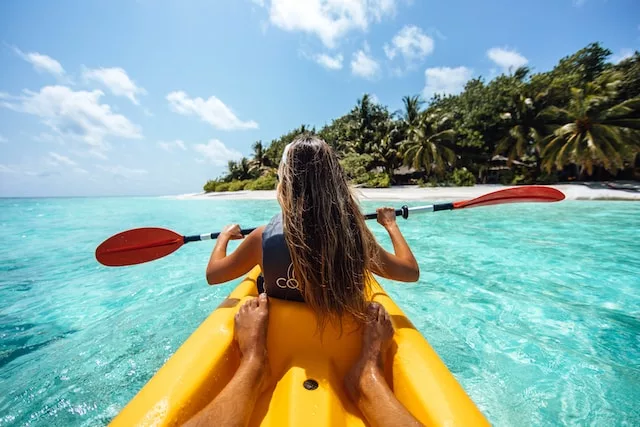
Stay Here
Fushifaru
North of Malé on the Lhaviyani Atoll, Fushifaru has a strong cultural focus. It’s perfect for visitors who want to experience traditional food, get familiar with the history of the island and learn some Maldivian, known as Dhivehi in the country. Guests are invited to witness Maldivian rituals such as coconut collecting and husking; and the various drumming and dancing routines are a delight to watch. Villas are open-plan and have open-air bathrooms, most with private plunge pools, and the bar hosts live music shows. Huge hammocks, swings and wicker chairs hanging from trees are dotted around the island, begging for Instagram photo shoots. The staff are especially warm and attentive.
From R5 763 per room pn, including breakfast
+960 662 0202
Hideaway Beach Resort
In the very far north of the Maldives sits the Haa Alifu Atoll. Hideaway Beach Resort caters well to couples, offering wedding and honeymoon packages, as well as activities such as the Private Romantic Getaway – a guide whisks you away to a remote little sandbank for the evening. There are also private sunset cruises, or you can order a candlelit couple’s dinner under a linen canopy in a secluded nook of the island. The over-water villas feature infinity pools and creature comforts such as jetted bathtubs and glass-floored living rooms.
From R6 278 per villa for four pn, including breakfast
+960 650 1515
A version of this article originally appeared in the July 2022 print issue of Getaway
Follow us on social media for more travel news, inspiration, and guides. You can also tag us to be featured.
TikTok | Instagram | Facebook | Twitter
ALSO READ: Spend 48 hours exploring Kaapschehoop, Mpumalanga









